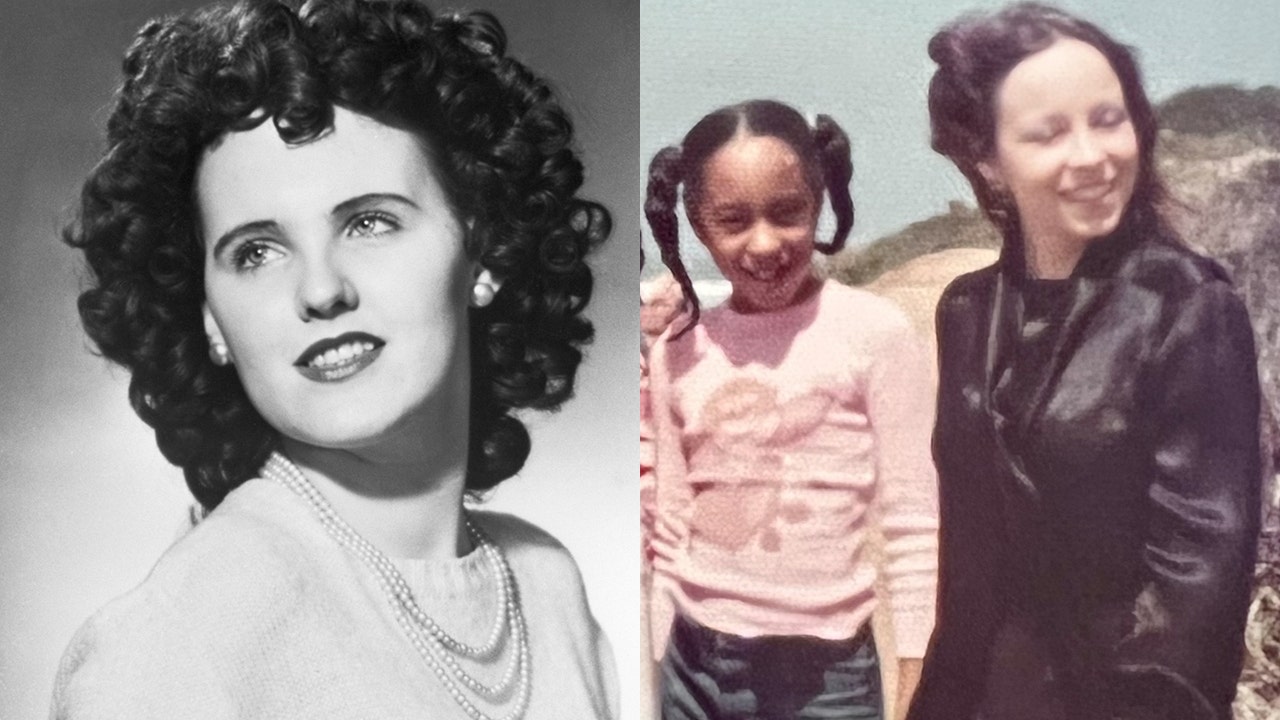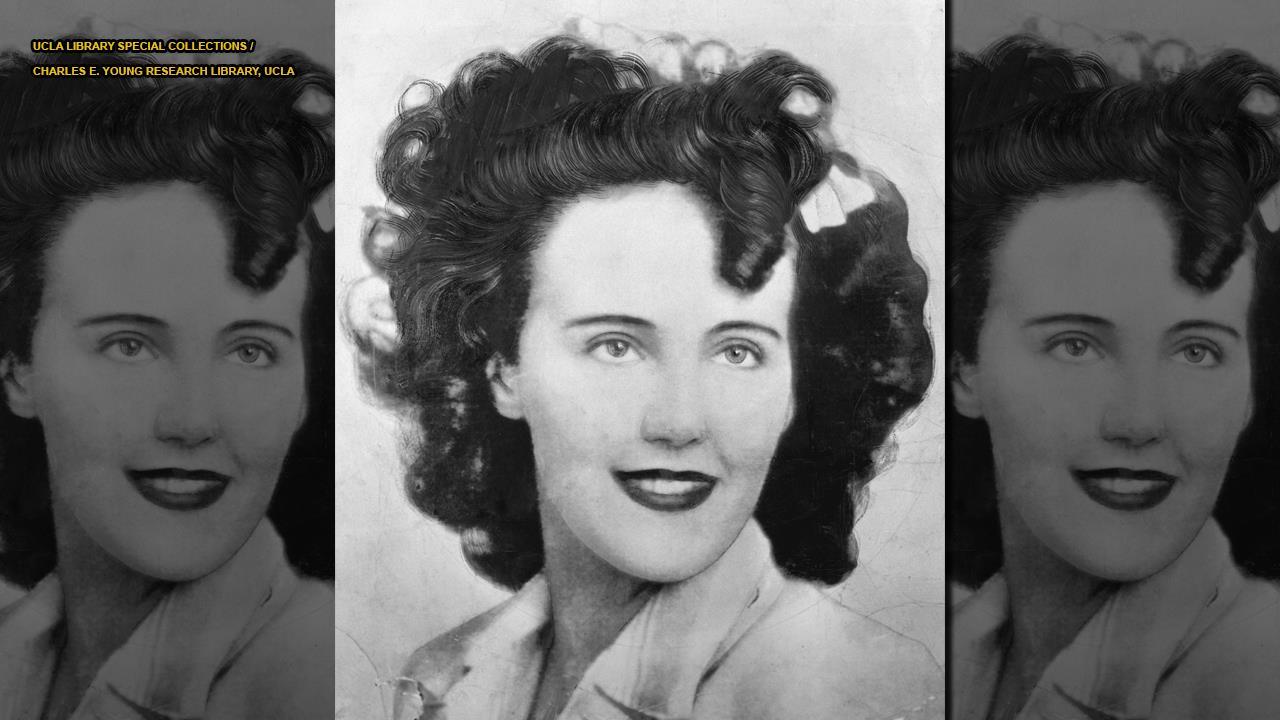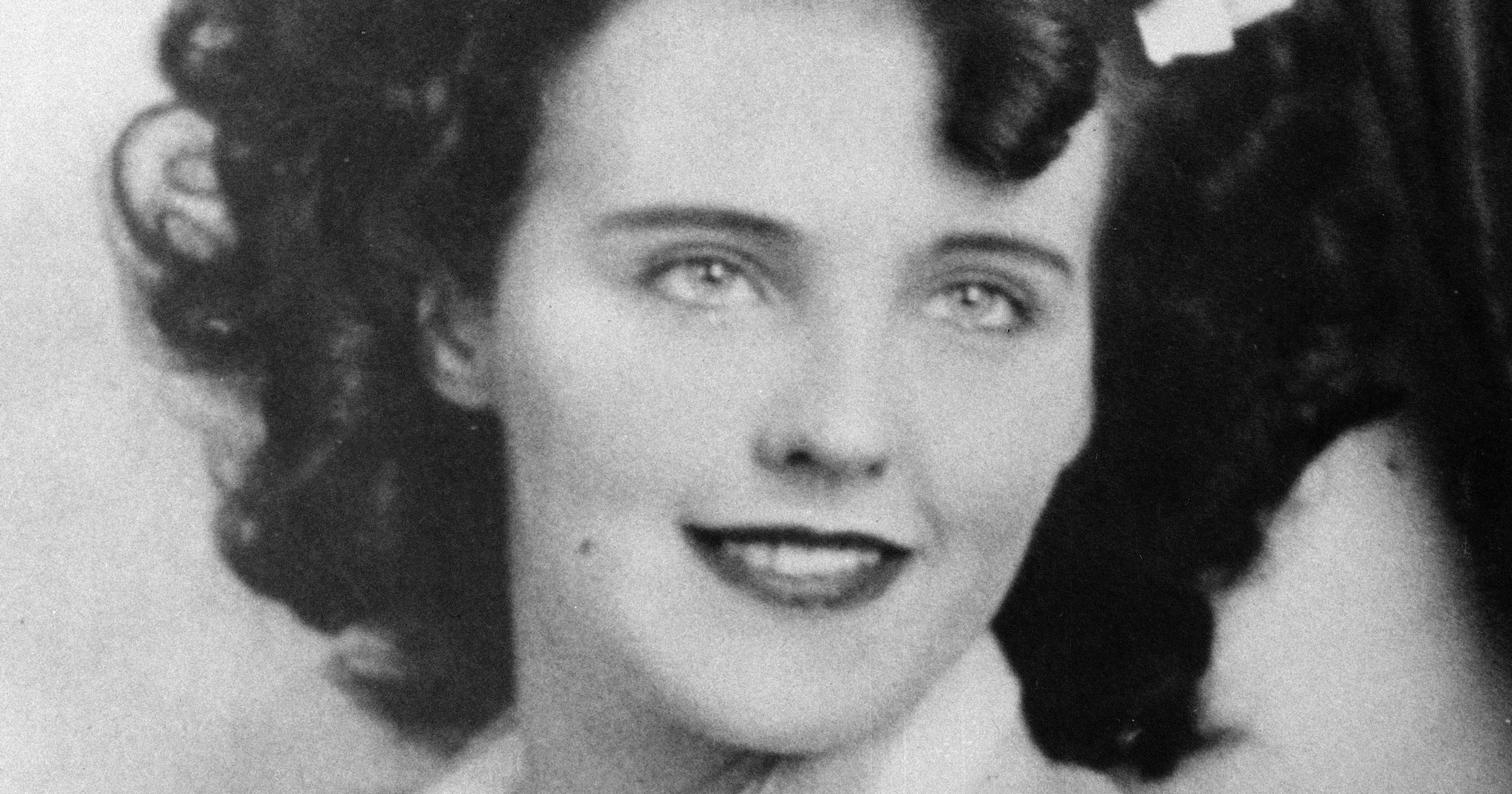The Enigma Of The Black Dahlia: A Chilling Unsolved Mystery
The Black Dahlia murder case stands as one of the most haunting and enigmatic mysteries in contemporary history. This perplexing case has intrigued investigators and the public for decades, sparking endless debates and speculations. The brutal killing of Elizabeth Short, whose nickname "The Black Dahlia" was inspired by her dark, alluring charm, has left an indelible mark on true crime enthusiasts and historians alike. Her tragic death continues to resonate with those seeking answers to one of the darkest chapters in American history.
The Black Dahlia murder case not only sheds light on the darkest aspects of human behavior but also raises profound questions about the justice system's ability to solve cold cases. Despite numerous theories and exhaustive investigations, the truth behind Elizabeth Short's murder remains shrouded in mystery, cementing its place as one of the most infamous unsolved crimes in the United States. The case serves as a stark reminder of the challenges faced in uncovering the truth behind such heinous acts.
In this article, we will delve deeply into the Black Dahlia murder case, exploring the events that led to the crime, the complexities of the investigation, and the profound cultural impact it has had. By examining the evidence, analyzing various theories, and reflecting on the societal implications, we aim to provide a comprehensive understanding of this tragic and enduring mystery.
Table of Contents
- Introduction to the Black Dahlia Murder Case
- Biography of Elizabeth Short
- Crime Scene Details
- Investigation Process
- Theories Surrounding the Case
- Psychological Aspects of the Crime
- Media Coverage and Public Reaction
- Legal Implications and Challenges
- Cultural Impact and Legacy
- Conclusion and Final Thoughts
Introduction to the Black Dahlia Murder Case
On January 15, 1947, in Leimert Park, Los Angeles, a shocking discovery sent waves of horror across the nation. The mutilated body of Elizabeth Short, a 22-year-old aspiring actress, was found in a vacant lot, her body gruesomely bisected. The Black Dahlia murder scene became a chilling symbol of the darker side of human nature, captivating the media and public alike. The crime's grisly details sparked widespread speculation and countless theories about the identity of the killer, a mystery that remains unsolved to this day.
Despite the tireless efforts of law enforcement and private investigators, the identity of the person responsible for Elizabeth's murder remains elusive. The case has inspired a multitude of books, films, and documentaries, each attempting to unravel the enigma surrounding this tragic event. The enduring fascination with the Black Dahlia case lies not only in the horrific nature of the crime but also in the lingering questions that continue to haunt those who study it.
To fully understand the Black Dahlia murder case, it is essential to examine the historical context, the investigative techniques of the time, and the psychological factors that may have influenced the killer's actions. This in-depth analysis will provide a more profound understanding of the case and its lasting legacy.
- Exploring The Lives And Legacy Of Maggie Mcconaugheys Parents
- Exploring The Monte Carlo Moraco Police Car A Pillar Of Modern Law Enforcement
Biography of Elizabeth Short
Before exploring the chilling details of the Black Dahlia murder case, it is crucial to understand the life and background of Elizabeth Short. Born on July 29, 1924, in Boston, Massachusetts, Elizabeth was the second of five daughters in her family. Known for her striking beauty and captivating personality, she moved to Los Angeles with dreams of becoming a successful actress, drawn to the allure of Hollywood's glitz and glamour.
Below is a summary of Elizabeth Short's personal information:
| Full Name | Elizabeth Short |
|---|---|
| Date of Birth | July 29, 1924 |
| Place of Birth | Boston, Massachusetts |
| Occupation | Aspiring Actress |
| Date of Death | January 15, 1947 |
| Cause of Death | Murder |
Early Life and Aspirations
Elizabeth Short's early life was marked by frequent relocations and personal challenges due to her family's financial struggles. Despite these hardships, Elizabeth remained determined to succeed in the entertainment industry, drawing inspiration from the glamorous world of Hollywood. Her aspirations and determination were evident in her relentless pursuit of a career in acting, a dream that tragically ended far too soon.
Crime Scene Details
The Black Dahlia murder scene was discovered by a local resident who encountered Elizabeth Short's body while walking her dog. The gruesome sight prompted an immediate call to the police, initiating one of the most high-profile investigations in Los Angeles history. The crime scene revealed a meticulously orchestrated tableau, with Elizabeth's body positioned in a manner that suggested a deliberate attempt to send a chilling message.
Key details of the crime scene include:
- Elizabeth's body was divided into two parts at the waist.
- Her face had been slashed from ear to ear, creating a grotesque grin.
- Her hands were tied above her head, and her body was posed in a manner that suggested a ritualistic act.
These disturbing details have fueled numerous theories about the killer's motives and identity, with some suggesting connections to occult practices or a deeply disturbed individual. The crime scene's eerie precision continues to baffle investigators and captivate the public's imagination.
Evidence Found at the Scene
Investigators meticulously collected various pieces of evidence from the Black Dahlia murder scene, hoping to uncover clues about the killer's identity. Key findings included:
- A heel print in the soil near the body, potentially belonging to the killer.
- A few strands of hair believed to be from the killer.
- A cement sack containing mud and leaves, possibly used to transport the body.
Despite these discoveries, no definitive leads emerged, leaving the case unsolved for over seven decades.
Investigation Process
The investigation into the Black Dahlia murder case was extensive, involving hundreds of detectives and thousands of leads. The Los Angeles Police Department (LAPD) conducted interviews with numerous individuals, including acquaintances of Elizabeth Short and potential suspects. Despite their tireless efforts, the case remains one of the most baffling unsolved mysteries in American history.
Challenges faced during the investigation included:
- Limited forensic technology at the time, making it difficult to analyze evidence effectively.
- A lack of reliable witness testimonies, complicating efforts to piece together the events surrounding the crime.
- An overwhelming number of false confessions and leads, creating confusion and diverting resources.
Modern advancements in forensic science have since been applied to the case, but no conclusive evidence has emerged to identify the killer. The passage of time has only added to the case's complexity, leaving many questions unanswered.
Theories Surrounding the Case
Over the years, numerous theories have been proposed to explain the Black Dahlia murder case. Some suggest a connection to serial killers operating in the area, while others point to personal vendettas or psychological disorders. The lack of concrete evidence has allowed these theories to flourish, each offering a unique perspective on the crime.
Popular Theories
Below are some of the most widely discussed theories surrounding the Black Dahlia murder case:
- Serial Killer Theory: Some investigators believe the killer may have been a serial murderer targeting young women in the Los Angeles area.
- Personal Vendetta Theory: Others suggest the crime was motivated by a personal grudge against Elizabeth Short, possibly stemming from a romantic relationship gone wrong.
- Occult Motive Theory: A more controversial theory posits that the murder was part of a ritualistic act tied to occult practices.
While none of these theories have been proven, they continue to fuel the public's fascination with the case, ensuring that Elizabeth Short's story remains a part of the cultural consciousness.
Psychological Aspects of the Crime
The Black Dahlia murder case raises important questions about the psychological profile of the killer. Experts in forensic psychology have analyzed the evidence and crime scene details to develop theories about the mental state and motives of the perpetrator. Key psychological aspects include:
- A possible obsession with control and domination, reflected in the meticulous staging of the crime scene.
- A desire to create a lasting impression, suggesting a need for recognition or infamy.
- Potential links to personality disorders or psychopathy, indicating a lack of empathy and remorse.
Understanding the psychological factors behind the crime can provide valuable insights into the mind of the killer and may one day lead to the resolution of this enduring mystery.
Impact on Victims' Families
The psychological toll of the Black Dahlia murder case extends beyond the killer, affecting the families of victims and the broader community. The lack of closure in such cases can lead to long-term emotional distress and a sense of helplessness among those seeking justice. The emotional weight of the case underscores the importance of providing support and resources to those impacted by violent crime.
Media Coverage and Public Reaction
The Black Dahlia murder case received extensive media coverage, with newspapers and radio stations across the country reporting on the details of the crime. The nickname "The Black Dahlia" was coined by reporters, inspired by a 1946 film noir titled "The Blue Dahlia." The media's portrayal of the case played a significant role in shaping public perception and fueling interest in the investigation.
Public reaction to the Black Dahlia murder case was one of shock and disbelief, as the brutal nature of the crime defied comprehension. The case became a symbol of the dark underbelly of Los Angeles and the dangers faced by young women in urban environments. The widespread media coverage ensured that Elizabeth Short's story would not be forgotten.
Legal Implications and Challenges
The Black Dahlia murder case highlights the legal challenges faced by investigators in solving cold cases. At the time of the crime, forensic technology was in its infancy, and many investigative techniques used today were not yet available. These limitations have made it difficult to reopen the case with modern tools and methods.
Legal implications of the Black Dahlia murder case include:
- The need for improved forensic science and investigative protocols to enhance the ability to solve cold cases.
- The importance of preserving evidence for future analysis, ensuring that advancements in technology can be applied to unresolved cases.
- The ethical considerations surrounding the use of unverified leads and confessions, emphasizing the need for careful evaluation of evidence.
Efforts to revisit the case using modern technology continue, but the passage of time and the loss of key evidence pose significant challenges to achieving justice for Elizabeth Short.
Cultural Impact and Legacy
The Black Dahlia murder case has left a lasting impact on popular culture, inspiring countless works of art, literature, and film. The case serves as a reminder of the complexities of human nature and the importance of seeking justice for victims of violent crime. Its legacy continues to resonate with true crime enthusiasts and historians, ensuring that Elizabeth Short's story is not forgotten.
Modern Interpretations
Modern interpretations of the Black Dahlia murder case often focus on the psychological and social factors that contributed to the crime. By examining the historical context and cultural influences of the time, these interpretations provide a deeper understanding of the case and its broader implications. The case's enduring fascination underscores the importance of continued exploration and analysis in the pursuit of truth and justice.
Conclusion and Final Thoughts
The Black Dahlia murder case remains one of the most captivating and tragic mysteries in modern history. Through a comprehensive examination of the case, we have explored the details of the crime, the complexities of the investigation, and the profound cultural impact it has had. While the identity of the killer may never be known, the legacy of Elizabeth Short and the lessons learned from her tragic death continue to inspire those who seek justice and understanding.
We invite you to share



Detail Author:
- Name : Bridgette Hill
- Username : will.peyton
- Email : eddie82@zieme.info
- Birthdate : 1999-09-13
- Address : 15555 Ray Crossing Suite 514 Port Makayla, PA 33879-8795
- Phone : (501) 744-2231
- Company : Johns, Mitchell and Hegmann
- Job : Insulation Worker
- Bio : Ut deleniti qui ut natus voluptate. Rem enim iusto et natus earum. Repellendus alias et corporis dignissimos cum excepturi.
Socials
facebook:
- url : https://facebook.com/gonzalo3703
- username : gonzalo3703
- bio : Quo esse est molestiae et dolore.
- followers : 5077
- following : 1450
tiktok:
- url : https://tiktok.com/@gonzalomarks
- username : gonzalomarks
- bio : Nam et et et et. Sed maxime animi pariatur. Velit corporis distinctio quod.
- followers : 4973
- following : 864
instagram:
- url : https://instagram.com/marks2022
- username : marks2022
- bio : Consectetur harum eos at. Eos libero voluptates ea quae. Laboriosam vel et doloribus ut.
- followers : 4919
- following : 1273
twitter:
- url : https://twitter.com/gonzalomarks
- username : gonzalomarks
- bio : Optio est harum eaque distinctio et. Perferendis iure placeat modi dolorem.
- followers : 4402
- following : 1782
linkedin:
- url : https://linkedin.com/in/gonzalo_marks
- username : gonzalo_marks
- bio : Provident commodi in tempore.
- followers : 1768
- following : 607